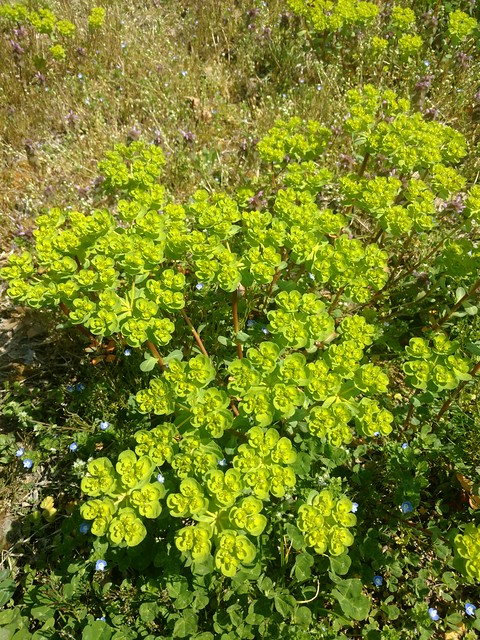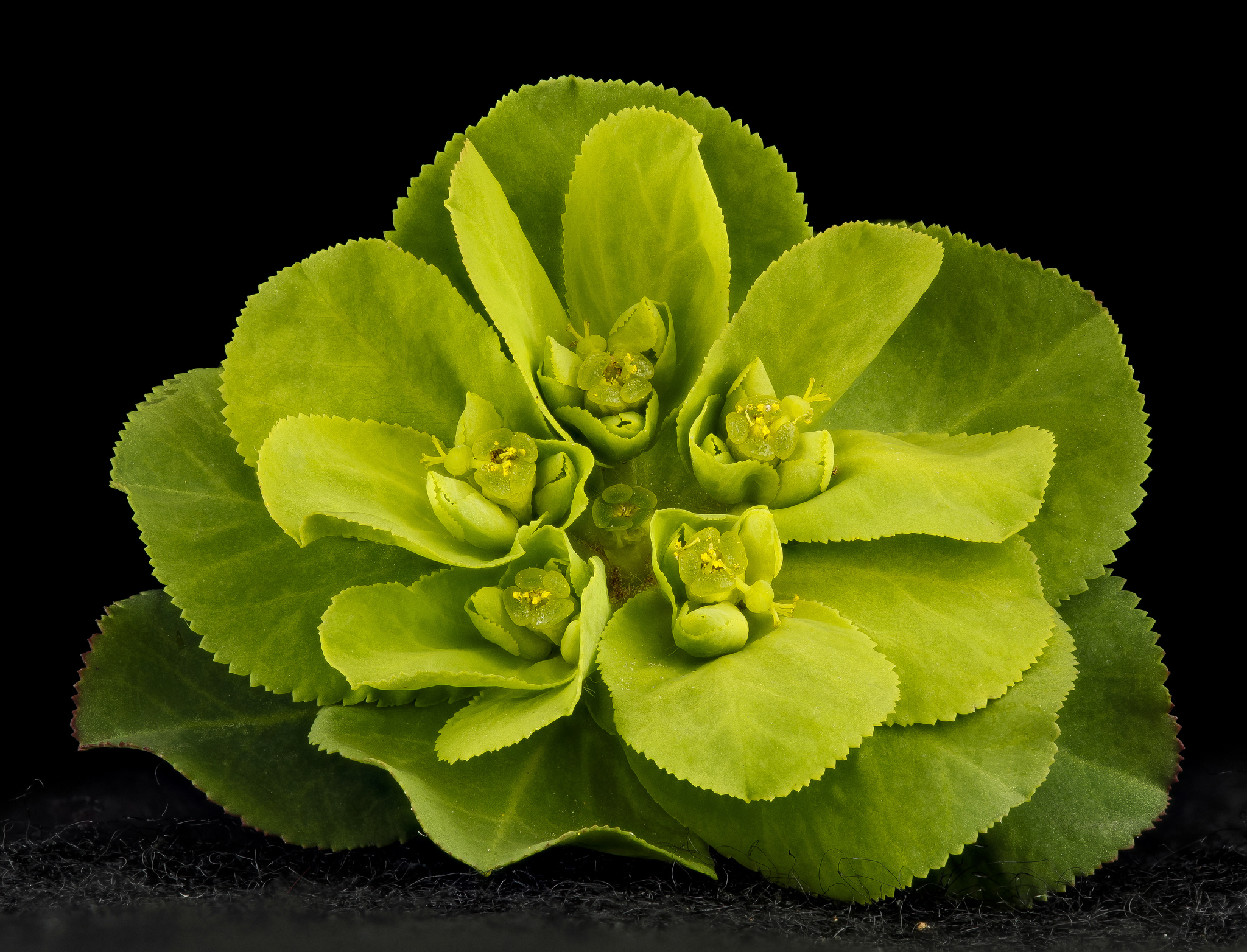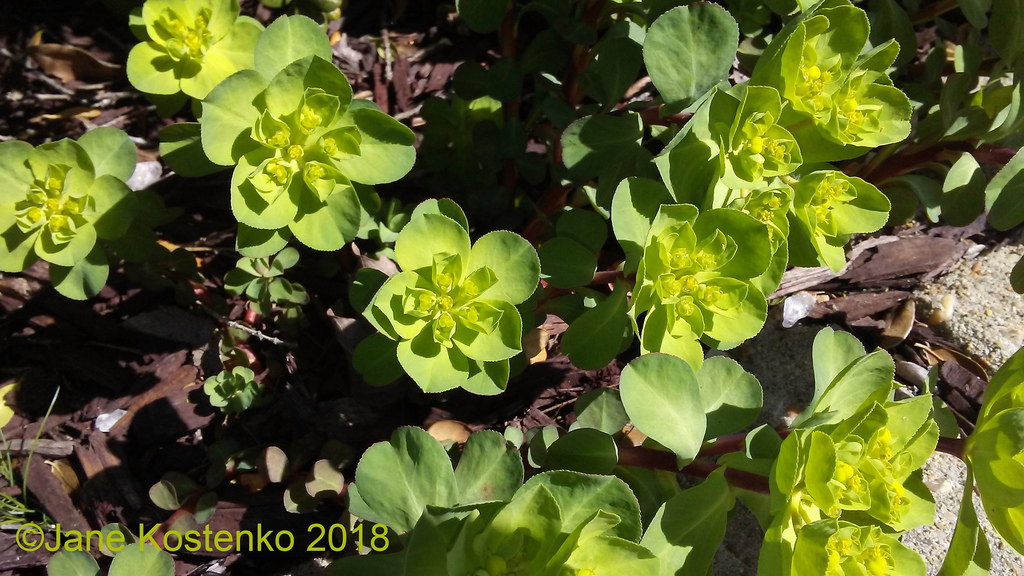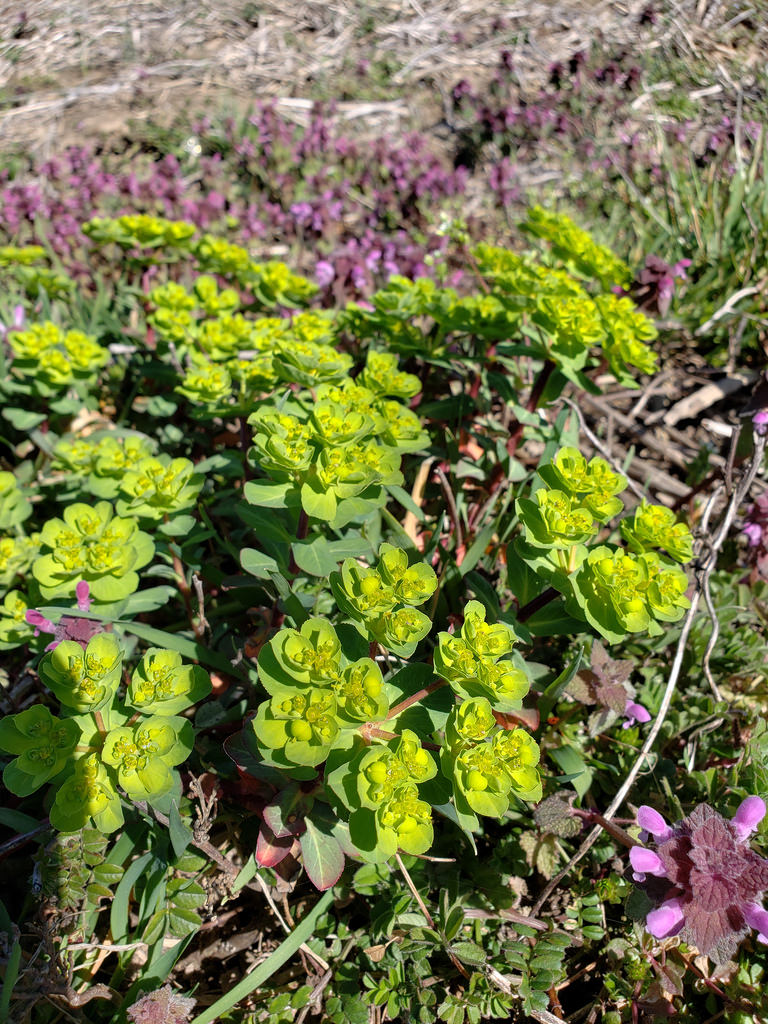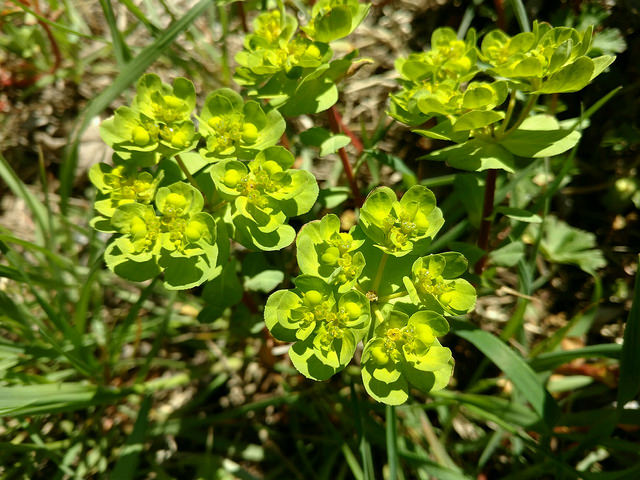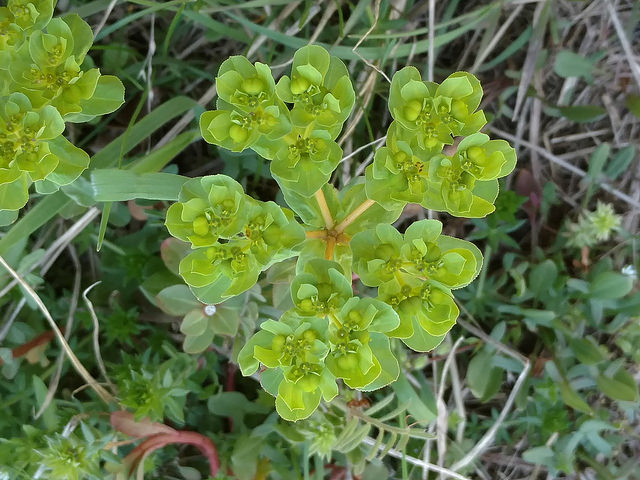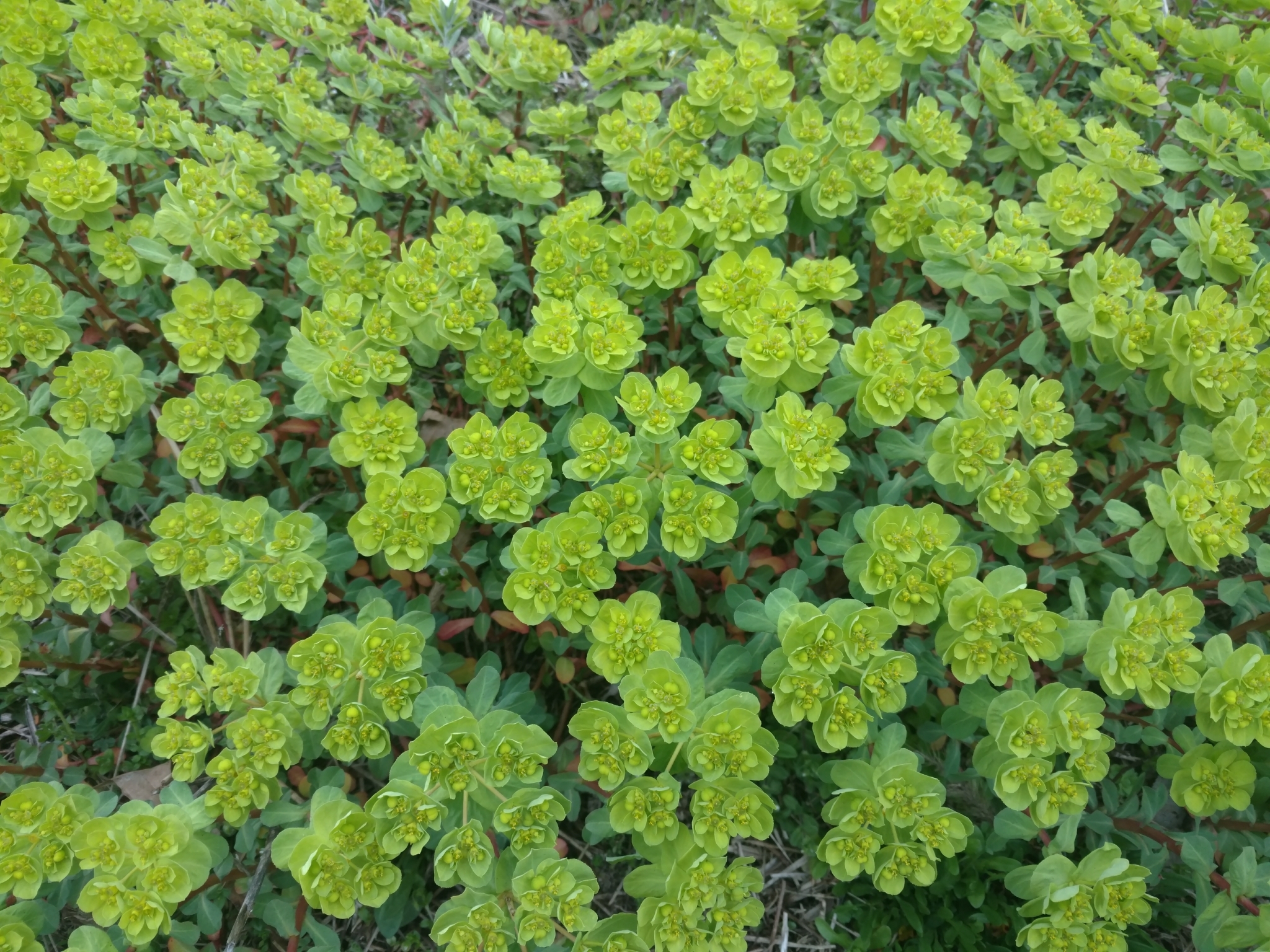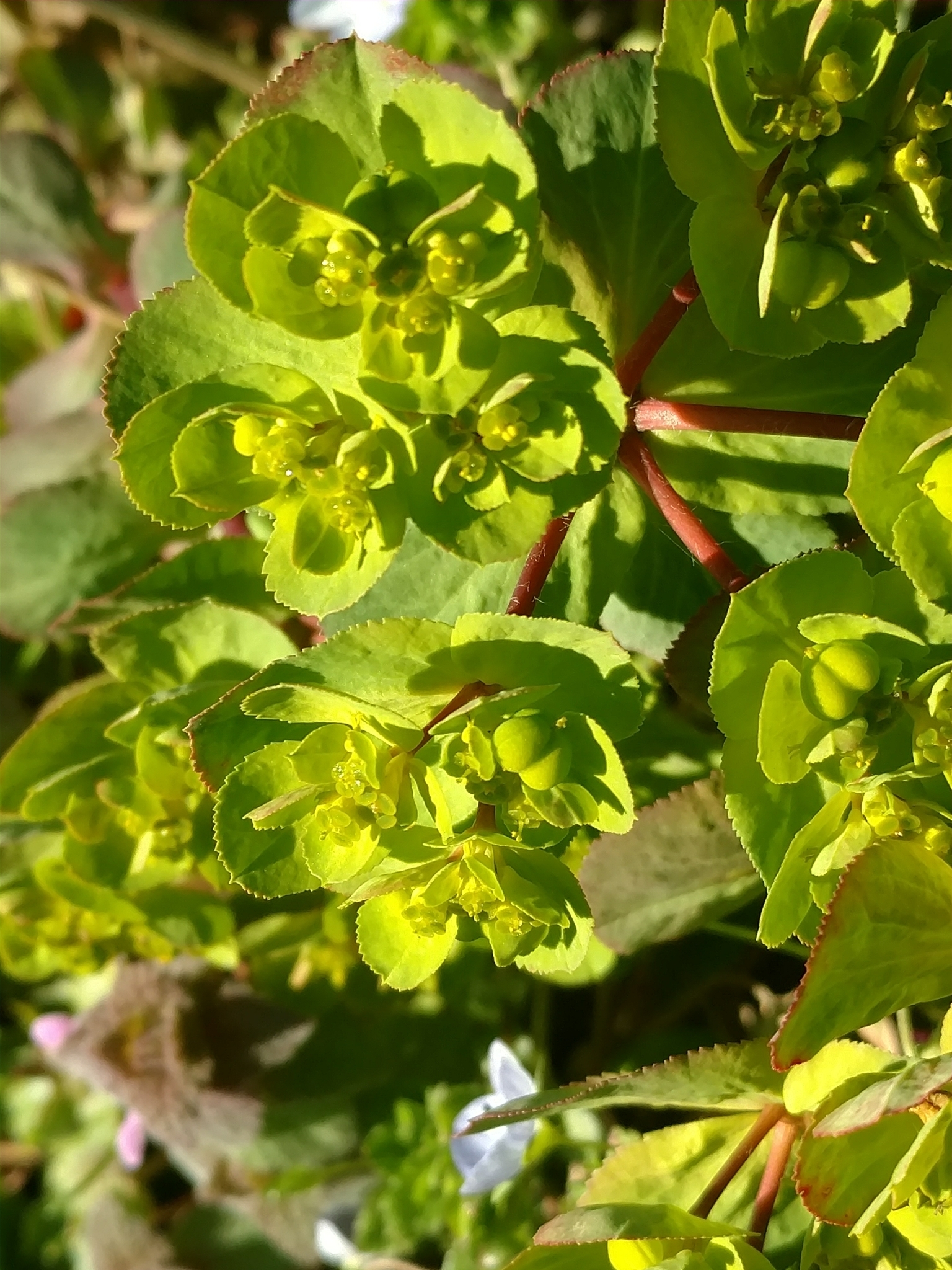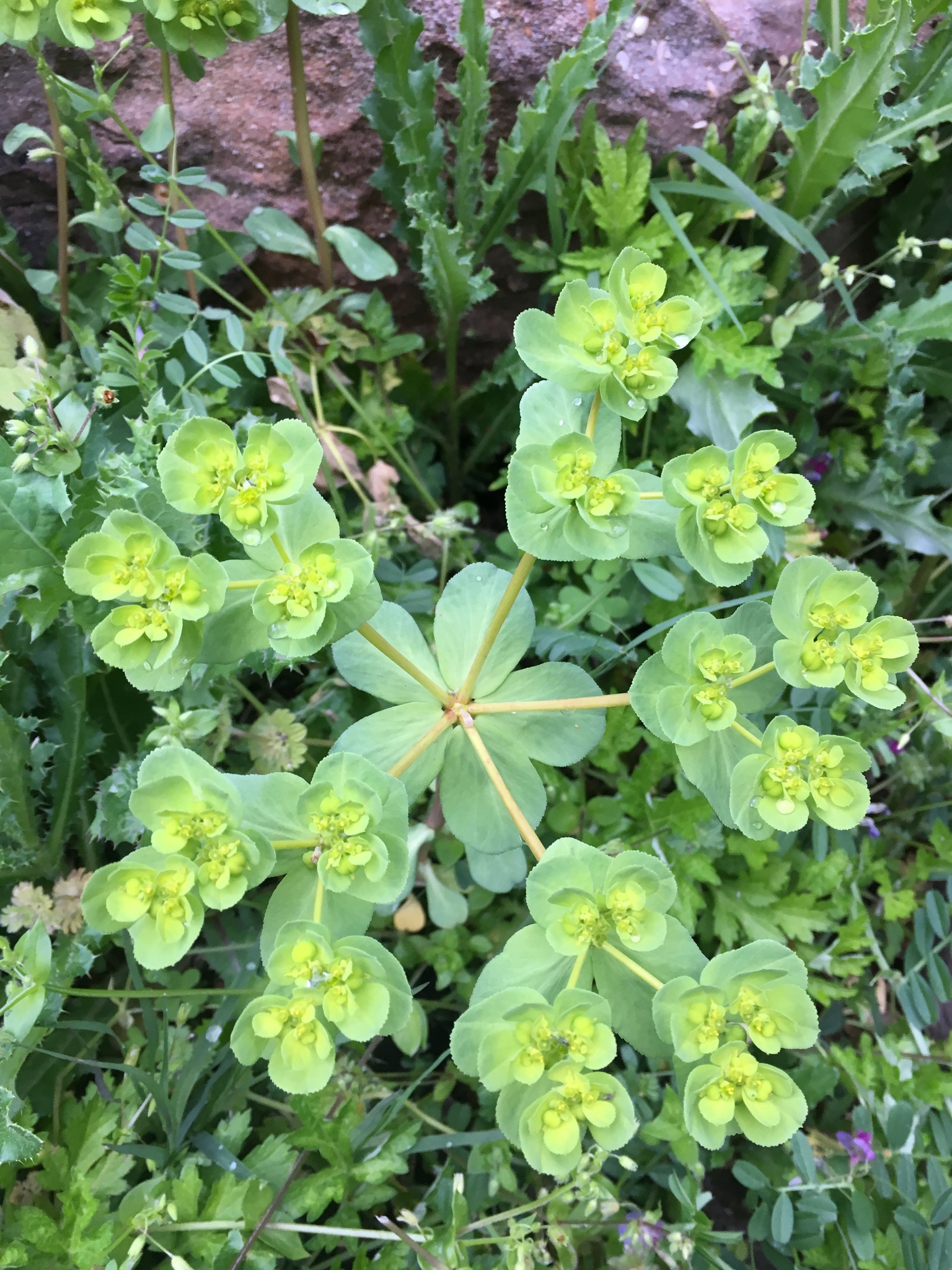Map Snapshot















98 Records
Seasonality Snapshot
Source: Wikipedia
| Euphorbia helioscopia | |
|---|---|

| |
| Flowers and immature fruit | |
| Scientific classification | |
| Kingdom: | Plantae |
| Clade: | Tracheophytes |
| Clade: | Angiosperms |
| Clade: | Eudicots |
| Clade: | Rosids |
| Order: | Malpighiales |
| Family: | Euphorbiaceae |
| Genus: | Euphorbia |
| Species: | E. helioscopia
|
| Binomial name | |
| Euphorbia helioscopia | |
Euphorbia helioscopia, the sun spurge or madwoman's milk,[1] is a species of flowering plant in the spurge family Euphorbiaceae. It is a herbaceous annual plant, native to most of Europe, northern Africa, and eastward through most of Asia.[2][3][4]
Additional folk names include wart spurge, summer spurge, umbrella milkweed, and wolf's-milk. [5][6]
Description
[edit]Euphorbia helioscopia is an annual plant growing in arable land and disturbed ground. It grows to 10–50 cm tall, with a single, erect, hairless stem, branching toward the top. The leaves are oval, broadest near the tip, 1.5–3 cm long, with a finely toothed margin. The flowers are small, yellow-green, with two to five basal bracts similar to the leaves but yellower. Flowering lasts from mid-spring to late summer.[4][5]
Similar species include Euphorbia rhabdotosperma, having the appearance of E. helioscopia with smaller parts and differing seed surface [7] (Iran, North Caucasus, Transcaucasus, Turkey, Turkmenistan).
Uses
[edit]Active ingredients extracted from Euphorbia helioscopia are used in pharmaceutical industry.[citation needed] The plant is used in Chinese traditional medicine.[8]
Its extract has been found to inhibit hepatocellular carcinoma in vivo in mice.[9]
Chemistry
[edit]Euphorbia helioscopia contains toxic diterpenes[10] and diterpenoids[11] and phorbol esters. These substances are the major skin irritants found in the plant.[12] The plant is considered poisonous when eaten raw. Nausea, allergic reactions, skin irritation, vomiting may occur after eating. [13]
A number of tannins can be found in E. helioscopia.[14] Helioscopinin-A shows anti-allergic and anti-asthmatic activities in guinea pigs. It is suggested that this compound exerts its activities through antagonism on leukotriene D4-induced responses.[15]
References
[edit]- ^ "Euphorbia helioscopia (Madwoman's Milk) - Practical Plants". practicalplants.org. Retrieved 2024-03-28.
- ^ "Euphorbia helioscopia". Germplasm Resources Information Network. Agricultural Research Service, United States Department of Agriculture. Retrieved 14 January 2018.
- ^ Flora Europaea: Euphorbia helioscopia
- ^ a b Blamey, M. & Grey-Wilson, C. (1989). Flora of Britain and Northern Europe. ISBN 0-340-40170-2
- ^ a b Malta Wild Plants Euphorbia helioscopia Archived 2007-08-07 at the Wayback Machine
- ^ "Euphorbia helioscopia". Global Biodiversity Information Facility. Retrieved 4 December 2022.
- ^ Davis. Flora of Turkey and the East Aegean Islands, vol. 7.
- ^ Zhang, Wen; Guo, Yue-Wei (2006). "Chemical Studies on the Constituents of the Chinese Medicinal Herb Euphorbia helioscopia L". Chemical & Pharmaceutical Bulletin. 54 (7): 1037–9. doi:10.1248/cpb.54.1037. PMID 16819227.
- ^ Cheng J, Han W, Wang Z, Shao Y, Wang Y, Zhang Y, Li Z, Xu X, Zhang Y (2015). "Hepatocellular Carcinoma Growth Is Inhibited by Euphorbia helioscopia L. Extract in Nude Mice Xenografts". Biomed Res Int. 2015: 1–9. doi:10.1155/2015/601015. PMC 4450285. PMID 26090427.
- ^ Yamamura, Shosuke; Shizuri, Yoshikazu; Kosemura, Seiji; Ohtsuka, Jiro; Tayama, Takao; Ohba, Shigeru; Ito, Masatoki; Saito, Yoshihiko; Terada, Yukimasa (1989). "Diterpenes from Euphorbia helioscopia". Phytochemistry. 28 (12): 3421. Bibcode:1989PChem..28.3421Y. doi:10.1016/0031-9422(89)80360-7.
- ^ Zhang, Wen; Guo, Yue-Wei (2005). "Three New Jatrophone-Type Diterpenoids from Euphorbia helioscopia". Planta Medica. 71 (3): 283–6. doi:10.1055/s-2005-837832. PMID 15770554. S2CID 29332788.
- ^ Schmidt, Richard J.; Evans, Fred J. (1980). "Skin irritants of the sun spurge (Euphorbia helioscopia L)". Contact Dermatitis. 6 (3): 204–10. doi:10.1111/j.1600-0536.1980.tb05599.x. PMID 7389328. S2CID 22253978.
- ^ Abid Aqsa, Mushtaq Ahmad, Muhammad Zafar, Sadia Zafar, Mohamed Fawzy Ramadan, Ashwaq T. Althobaiti, Shazia Sultana, Omer Kilic, Trobjon Makhkamov, Akramjon Yuldashev, Oybek Mamarakhimov, Khislat Khaydarov, Afat O. Mammadova, Komiljon Komilov, and Salman Majeed (December 2023). "Foliar epidermal and trichome micromorphological diversity among poisonous plants and their taxonomic significance". Folia Horticulturae. 35 (2): 243–274. doi:10.2478/fhort-2023-0019. ISSN 2083-5965.
{{cite journal}}: CS1 maint: multiple names: authors list (link) - ^ Lee, Seung-Ho; Tanaka, Takashi; Nonaka, Gen-Ichiro; Nishioka, Itsuo (1990). "Tannins and related compounds. XCV. Isolation and characterization of helioscopinins and helioscopins, four new hydrolyzable tannins from Euphorbia helioscopia L. (1)". Chemical & Pharmaceutical Bulletin. 38 (6): 1518. doi:10.1248/cpb.38.1518.
- ^ Park Kwan Ha; Koh Dongsoo; Lee Seungho; Jung Illmin; Kyung Hyun Kim; Lee Chul-Hoon; Kim Kye-Hoon; Lim Yoongho (2001). "Anti-allergic and anti-asthmatic activity of helioscopinin-A, a polyphenol compound, isolated from Euphorbia helioscopia". Journal of Microbiology and Biotechnology. 11 (1): 138–142. INIST 995613.

